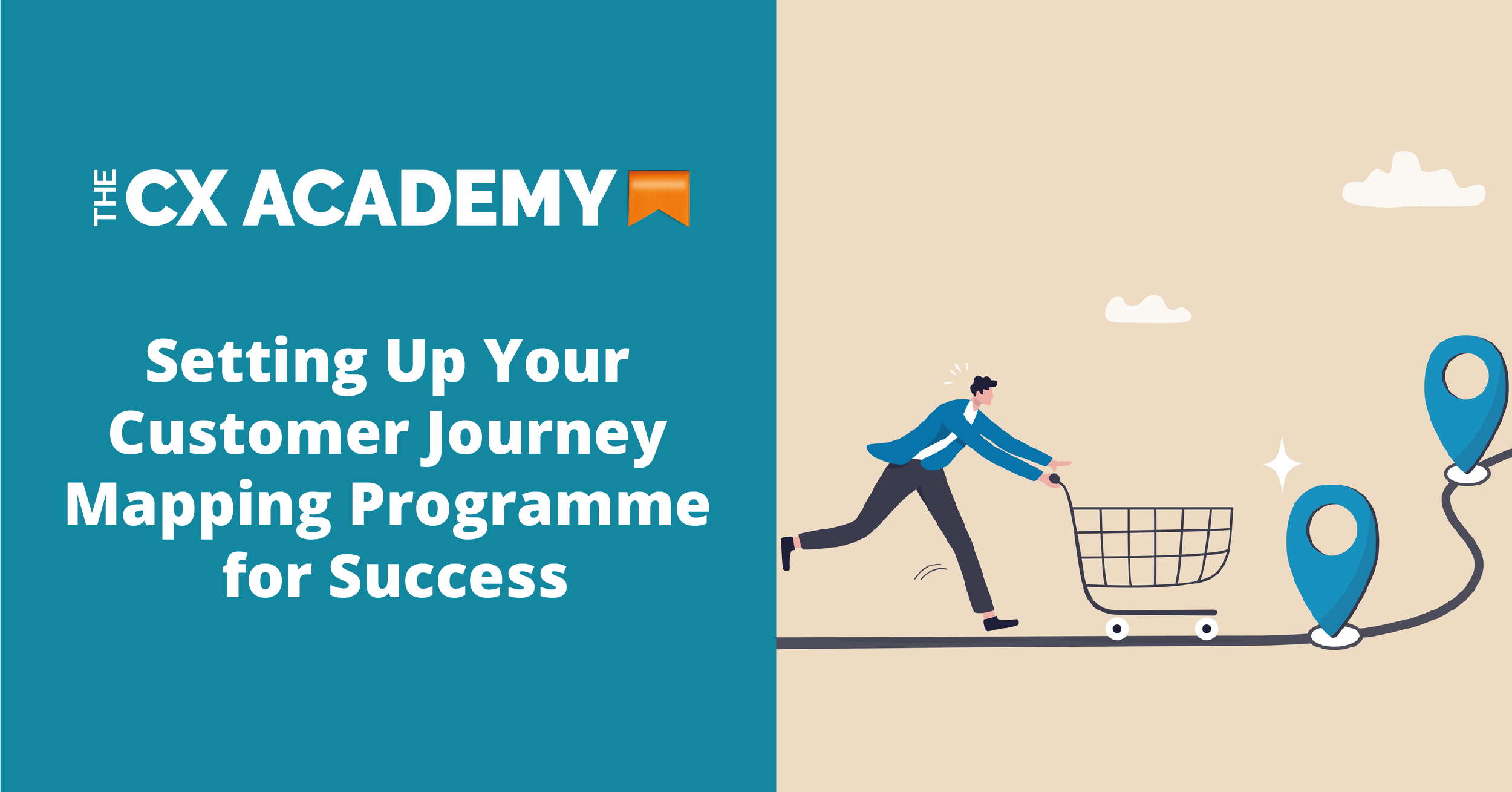
In today’s competitive market, understanding your customer’s journey is more important than ever. Customer journey mapping is the process of visualising and analysing the steps your customers take when interacting with your brand. It enables you to truly walk in your customer’s shoes, gaining a deep understanding of their experiences, needs, and frustrations. By identifying gaps between customer expectations and actual experiences, businesses can take action to close those gaps. This helps to improve customer satisfaction and increase loyalty, making customers more likely to return and advocate for your brand. But where do you begin? In our recent Thought Leadership Webinar series, we were delighted to have special guest presenter Melanie Fischer, CX Director at Xero, discuss how to kick off a customer journey mapping programme brilliantly, and how to set your programme up for success which we will explore here.
Setting Your Customer Journey Programme Up for Success:
Melanie understands starting a customer journey mapping programme can seem overwhelming at first, but she believes that with the right approach, it’s completely manageable. Here are the key steps to get you started:
- Clarify the Purpose: Begin by defining your business objective. Why are you mapping the customer journey? Are you trying to reduce churn? Improve customer retention? Be specific about your goals as this will guide your journey-mapping process.
- Know Your Customer: Customer personas are important for understanding your audience. These profiles represent the different types of customers that interact with your business. By understanding their motivations, frustrations, and behaviours, you can create a more accurate journey map that reflects real customer experiences.
- Measure Customer Sentiment: It’s not enough to assume what your customers feel; you need data to back it up. Customer satisfaction scores, Net Promoter Scores (NPS), and feedback from customer-facing teams will help you measure how customers are feeling at each stage of their journey.
- Identify Pain Points: Every journey has obstacles, whether it’s a slow website, a confusing checkout process, or poor communication. Use insights from surveys, social media, and customer feedback to identify these pain points and prioritise solutions. What questions do you want answered?
- Choose Your Tools and Data: Selecting the right tools and data is critical for tracking and analysing the customer journey. Make sure you have the right systems in place to collect and analyse data across touchpoints.
The Five Key Stages of the Customer Journey:
To create an effective journey map, Melanie discussed the following distinct stages. Here’s how you can approach each stage:
- Awareness: From the moment customers discover your brand, the relationship begins. Are people becoming aware of your brand? Take the time to discover if your marketing activities are reaching your potential customers, whether it be through advertising, social media or word of mouth.
- Consideration: This is another crucial phase as it’s time for the decision on whether you will gain a new customer or not. Think about what factors are influencing customers to choose your brand over other companies. If you put yourself in their shoes to understand their decision-making process, then you can design your messaging to address specific needs and concerns they may have.
- Engagement: As the relationship starts to build in the engagement stage, think about how you are going to keep them interested. This could be through email marketing, social media, or personalised content. This is a crucial step to maintain customers.
- Retention: Customer retention is more cost-effective than acquiring new ones. What strategies do you have in place? Whether it’s through loyalty programmes or excellent customer service, focusing on retention keeps customers returning to your business.
- Advocacy: If you achieve customer advocacy, you know you’ve achieved CX excellence! When customers share their positive experiences of you going above and beyond for them, it won’t be long before you get new customers too. How are you inspiring trust and encouraging customers to spread the word about your brand?
Emotions and Pain Points are the Secret to Customer Journey Mapping Success:
Melanie discusses the importance of considering the emotional aspect when planning your customer journey mapping experience. Not only do customers interact with your brand, they will feel emotions along the way. It is important to understand these emotions and to identify where the pain points occur to create a more empathetic customer journey.
For example, a customer may feel annoyed when they are waiting in a slow queue or confused when using your website. These emotions will affect their likelihood of returning and recommending your brand to others. If you address these pain points, you enhance the overall customer experience, and in addition to this, you will get a long-term and loyal customer!
Building a Customer-Centric Future:
Customer journey mapping isn’t a once-off task, it’s an ongoing process that requires attention and refinement. By using the correct tools, understanding your customers’ needs, and addressing pain points at each stage, you can create a smooth experience that drives retention and advocacy.
Remember, the goal isn’t just to meet customer expectations but to exceed them. When you consistently deliver outstanding experiences, your customers will become your most loyal advocates! Watch Melanie Fischer explore this topic further in our Thought Leadership Webinar below.